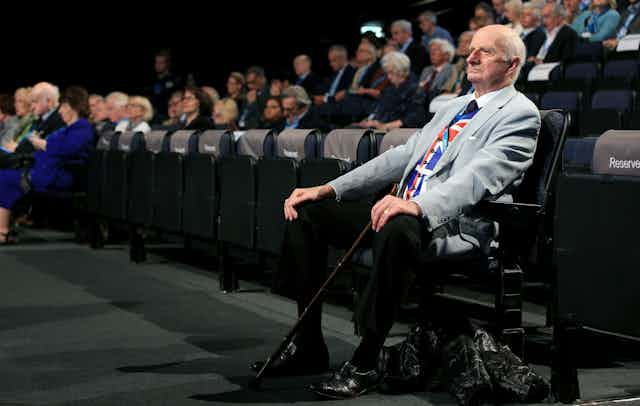From late September to early October, the UK’s political parties gather for their autumn conferences. The Conservatives, Labour, the Liberal Democrats and the Scottish National Party will be among the parties bringing their members and MPs together at some expense in a season that lasts about three weeks.
Party conferences fulfil a lot of important political functions in the British party system. Florence Faucher-King, a political scientist based at Sciences Po in Paris, has written the definitive study of British party conferences in the form of an anthropological analysis.
She argues that party conferences are central to the life of political parties. They contribute to setting policy agendas, developing policy options, legitimising policy choices, building party cohesion, motivating activists, publicising party activities and testing effective campaign messages among the wider public.
But it is fair to say that since TV coverage of conferences started in the 1950s, the focus on presenting an attractive face to the electorate and giving party leaders a publicity platform has taken precedence over their role as venues for debating and developing policies. The ritualistic standing ovations given to the leader’s speech is very much the centrepiece of contemporary party conferences. What started as a forum for internal debates and decision-making about policies among party members and leaders has become a scripted political theatre aimed at winning headlines and boosting social media campaigns.
This raises an interesting question – do these political theatres make any difference to the party’s popularity among the general public?
One way of answering this question is to look at voting intentions for the parties measured before and after the party conference season. If party conferences move the dial, then we should observe changes in voting intentions for the parties between August, before the season starts, and October, after it has ended. If a conference is reported to be a success, then voting intentions for the party in the polls should improve. If it’s a disaster plagued by calamity and infighting, then we should observe voting intentions for the party declining.
It is possible to find examples of this dynamic happening. After losing the general election in 1959, the Labour party conference in 1960 was a picture of disunity. A conflict between party activists and the leadership emerged over nuclear arms, with the party ultimately voting at the conference to adopt a policy of unilaterally abandoning Britain’s nuclear deterrent. This happened despite fierce opposition from the party leader, Hugh Gaitskell. The party’s voting intentions score in the August poll that year was 42%, but by October this had fallen to 37%.

The past year potentially provides evidence in the other direction. In August 2022, Labour polled 41% in voting intentions, but by October it was 52%. To be fair, much of the shift on that occasion was caused by Liz Truss’s ill-fated attempt to introduce unfunded tax cuts. Financial markets reacted very badly to the idea, and this would have directly affected public opinion. However, it also gave Keir Starmer an open goal to attack the government’s handling of this crisis in his party conference speech, which probably added to the significant change in voting intentions.
In this regard, Starmer was probably helped by Truss’s own conference speech, which was so hyper that it started with a standing ovation even before she spoke. In August of that year, Conservative vote intentions were 31%, so their popularity had eroded quite a bit already since the beginning of their tenure. After the party conference in October, it fell to 24%.
Is anyone listening?
But when we look at the relationship between party conferences and voting intentions over a long period of time, these examples appear to be the exception rather than the rule. When you compare the average voting intentions in August for the three major parties with the average voting intentions in October over the long term – between 1955, when the Conservative party conference was first televised, and 2022 – it’s clear there were no significant changes between the two months.
The average voting intentions for the Conservatives across the years was 38%, for Labour 42%, and for the Liberals and subsequently the Liberal Democrats 14% – both in August and October. On average, the dial did not move.
Voting intentions in August and October for the Conservatives, Labour and the Liberal Democrats, 1955 to 2022

So, these costly events that cause leaders immense anxiety aren’t really making a meaningful difference in the eyes of voters. Perhaps sensing the theatrical nature of the exercise, they are primed to ignore or discount much of what happens.
The time has come to change the emphasis so that party conferences are less about political theatre and more about debating issues and creating policies. It just might be that policymaking in government would be more effective and less subject to rapid U-turns and contradictions if more time were spent in party conferences preparing policies and less on cheerleading.
There is a large literature in political science on the effectiveness of deliberative democracy – an exercise in which ordinary citizens examine and debate policy choices with the aim of designing something effective and balanced. Ireland’s Citizens’ Assembly, for example, broke the deadlock on the question of abortion and triggered a constitutional change.
Annual party conferences will always be rallying exercises for the party members, but if they dialled down the political theatre a bit and reinforced the debate about what should be done, they might have more impact on the public.

